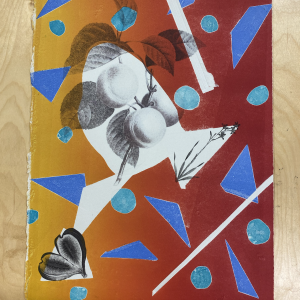The bachelor of fine arts (B.F.A.) degree in studio arts is the degree for the professional artist.
Admission + Portfolio Requirements
Focusing on the practice and production of contemporary art this degree affords you the opportunity to pursue intensive coursework in traditional modes of art making such as ceramics, jewelry and metalsmithing, painting, printmaking, and sculpture while exploring more contemporary approaches such as installation, performance art, public art, and social practices.
Students will have the opportunity to choose to concentrate within one of the traditional media intensives or pursue an interdisciplinary practice that incorporates various mediums, methods, and approaches guided by mentorship programs and extensive advising. With an emphasis on professional practices, emphasizing the skills and abilities to develop and maintain a sustainable artistic practice, this degree aims to build on Syracuse’s rich legacy of educating the innovative artists and cultural practitioners of the future.
As a studio arts major, you may strengthen your resume and broaden your perspectives with a VPA study abroad experience during your time at Syracuse. Consistently ranked among the top 25 international education providers in the U.S., Syracuse Abroad offers more than 100 programs in 60 countries. Studio arts majors often go abroad in Florence, Italy.
In addition to working as a professional artist, career paths for studio arts majors may include: art critic, art dealer, art teacher, conservationist, cultural journalist, curator, gallerist, master printer, or a visual development artist for animation. You may also wish to consider a career as an art therapist; Syracuse University offers a master of science (M.S.) degree in art therapy that prepares students to employ art-based approaches to counseling when working with diverse populations in a range of clinical and community-based settings.
Student Work
Curriculum
Below are the general program requirements for the B.F.A. in studio arts.
View official major requirements.
Major requirements: 44 credits
Art intensive requirements: 15 credits
Art in context requirements: 12 credits
Academic requirements: 6 credits
Academic electives: 27 credits
Studio electives: 18 credits
Total Credits: 122
Areas of Emphasis
- Ceramics
- Drawing
- Jewelry and Metalsmithing
- Painting
- Print Media
- Sculpture
- Craft and Material Studies
- Two-Dimensional Studies
- Three-Dimensional Studies
- Time Arts
- Installation
- Performance
- Social Engagement
- Other
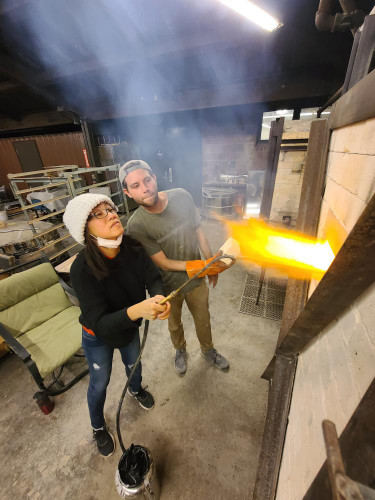
Ceramics
Our ceramics intensive helps you become a professional ceramist. We encourage you to explore several directions: pottery, sculpture, tile mosaics, and other areas as you focus on the specialty that interests you most.
Early studio courses focus on methods of hand building, wheel throwing, and mold work, as well as basic glaze chemistry and application. You also learn to use decorative techniques, kiln firing, and studio maintenance. As you become more advanced, you will use traditional and experimental techniques for production pieces and individual works of art. At this level, you will mix your own glazes, clays, and slips and fire your own kilns.
Across all studios, our overriding objective is to cultivate and enrich curiosities. We ask you to become comfortable with the uncertainties of risk while exercising the freedom of exploring what you don’t know, embracing the “what if” quotient. We want you to become an innovator and practitioner of change in your respective studio while being cognizant of—and a willing advocate of—tradition. Teaching to the unapologetically functional vessel through to conceptually framed inquires, the faculty encourages an open dialogue with other disciplines. This has been the underlying strength of our program through much of its 110-year history.
Ceramic art has deep roots in the Syracuse community. The Everson Museum of Art boasts one of the most comprehensive holdings of American ceramic art in the nation, including work by Syracuse potter Adelaide Alsop Robineau, who is today considered one of the country’s finest ceramists. In 1932, the museum established the “Ceramic National” exhibitions in her memory.
Many of our graduates have become studio ceramists, teachers at both the high school and college level, or have pursued other avenues such as designing and working in industry or occupational therapy, or managing cooperative ceramic studios.
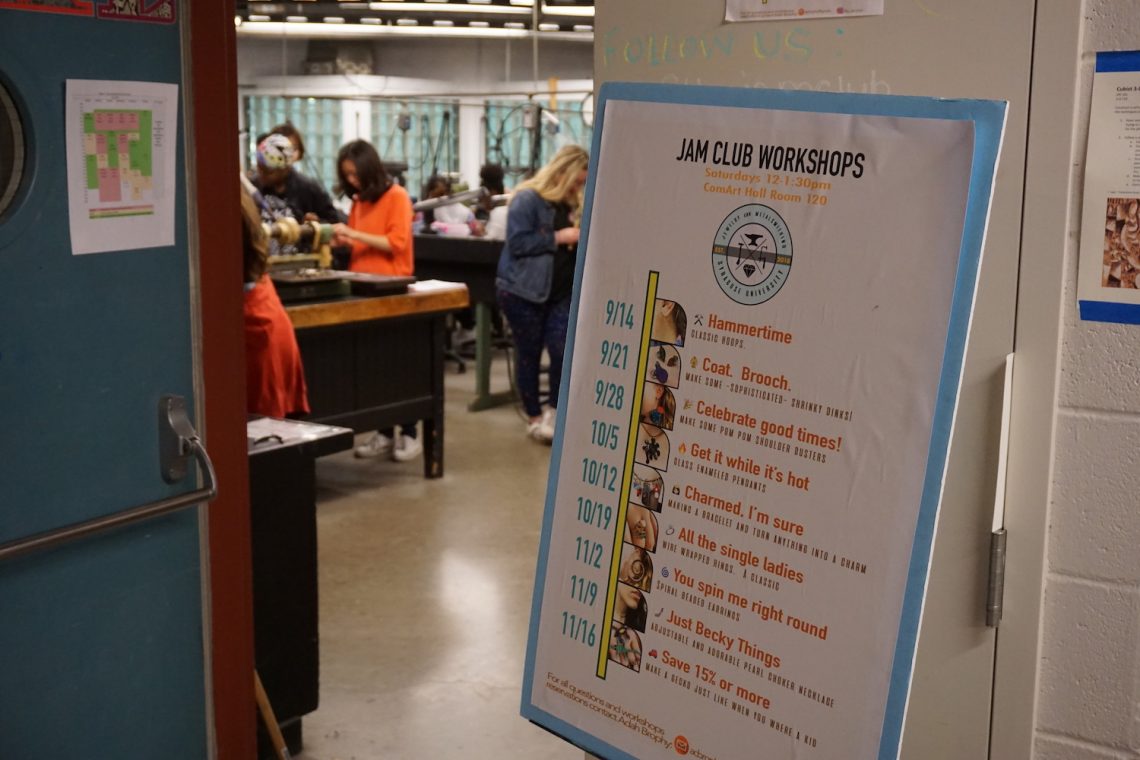
Jewelry and Metalsmithing
Our jewelry and metalsmithing intensive teaches you to produce artworks in such precious metals as gold and silver; nonprecious metals, including aluminum, bronze, brass, and pewter; and such nonmetal materials as plastics, woods, and gemstones. You may create jewelry, hollowware, flatware, and small sculpture.
Students make objects that range from the highly functional to the purely expressive. You study such jewelry and metalsmithing techniques as forming, joining, molding, stonecutting, stone setting, and surface decorating. Related studies in the classical and contemporary uses of materials and tools, rendering, and small sculpture provide topics for independent research and investigation. Your courses will also address current issues in the field, history of metalsmithing, and presentation and display skills.
Excellent studio facilities and attentive instruction from professional artists provide a balanced experience in fine crafts making and industrial processes. Through close contact with faculty members, students participate in frequent group and individual critiques and are assisted in identifying and pursuing goals.
Alumni work in numerous capacities, from designing silverware to modeling fantasy characters for the TV and movie industry, to working as freelance artists and designers.
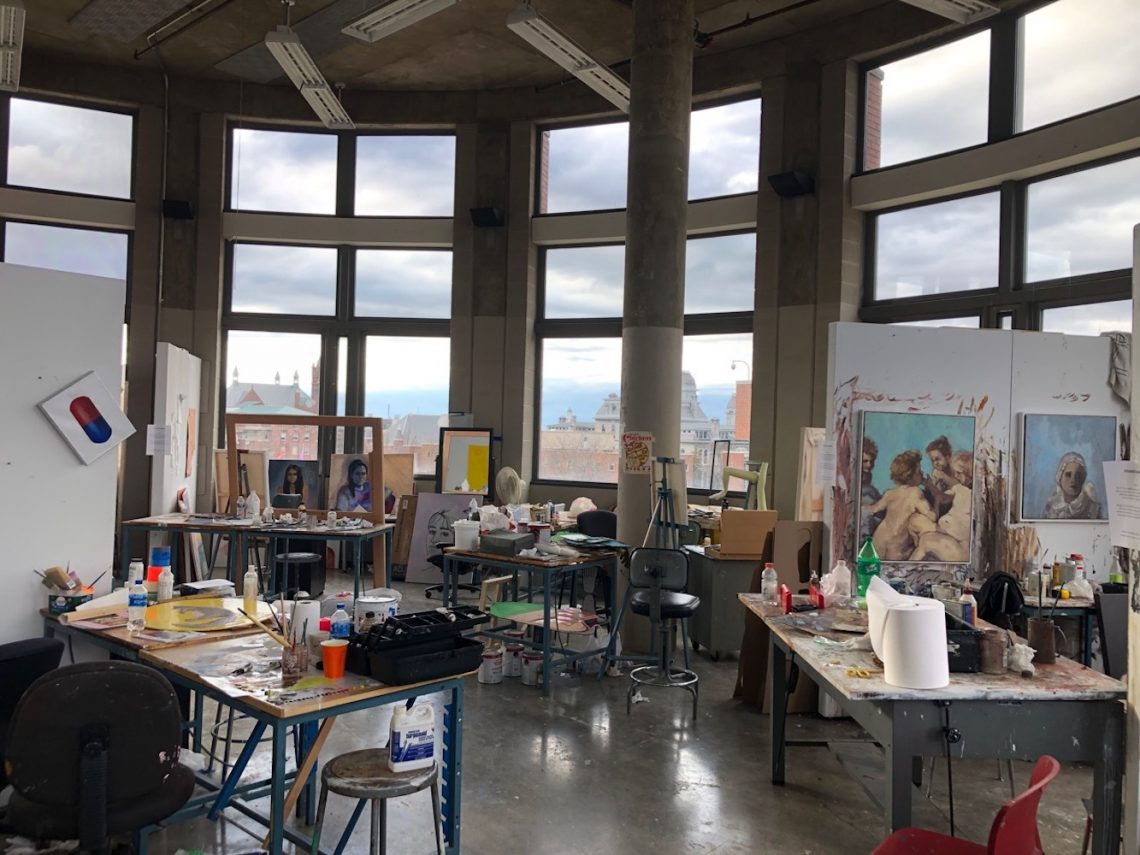
Painting
Our painting intensive emphasizes individuality of artistic expression. We encourage you to experiment in new directions and to remain open to innovative ideas and approaches as you develop your own unique style.
You will develop technical skills in painting, drawing, color, and pictorial composition through extensive studio work in oils, acrylics, watercolor, and nontraditional media. Courses in art history and critical studies expose you to concepts of the past and present and heighten your visual and intellectual perceptions.
Our mission is to provide you with the resources and support you need to develop your artistic talents and to understand the forces that drive creative endeavors in today’s increasingly interconnected world. With our internationally known faculty, visiting artists, and speakers, we offer you a wide perspective on the creative process and what it means to be an artist.
The resources we offer include studios that far exceed what many universities provide as well as global programs that include classes in Europe and other key locations in the United States. Our creative classes are complimented by the richness offered by an outstanding and diverse university environment. The painting classes are medium to small in size, with plenty of individual attention, but also with respect for the freedom that students need to find their creative voice.
The painting intensive’s long history at Syracuse demonstrates a steady and deep commitment to painting, a discipline that is as relevant now as ever. The “blank canvas” is both a hurdle and a tabula rasa—perhaps not a blank slate, but a clean slate. If artists today can learn to channel their creative energies effectively, the possibilities for meaningful expression can be enormous. The dichotomies between traditional and contemporary or figurative and non-representational have imploded, and what remains is strong, self-motivated, individual work.
The young artists in our painting intensive represent the global possibilities of what painting can be, whether it embraces tradition or not, whether it be interdisciplinary or multidisciplinary. Our intensive is designed to give you a working knowledge of the history of your practice as well as knowledge of contemporary critical thinking in your field. We recognize that our students are self-driven individuals whose artworks are a testament to the faith they have in their own abilities and the trust they have in the creative process itself.
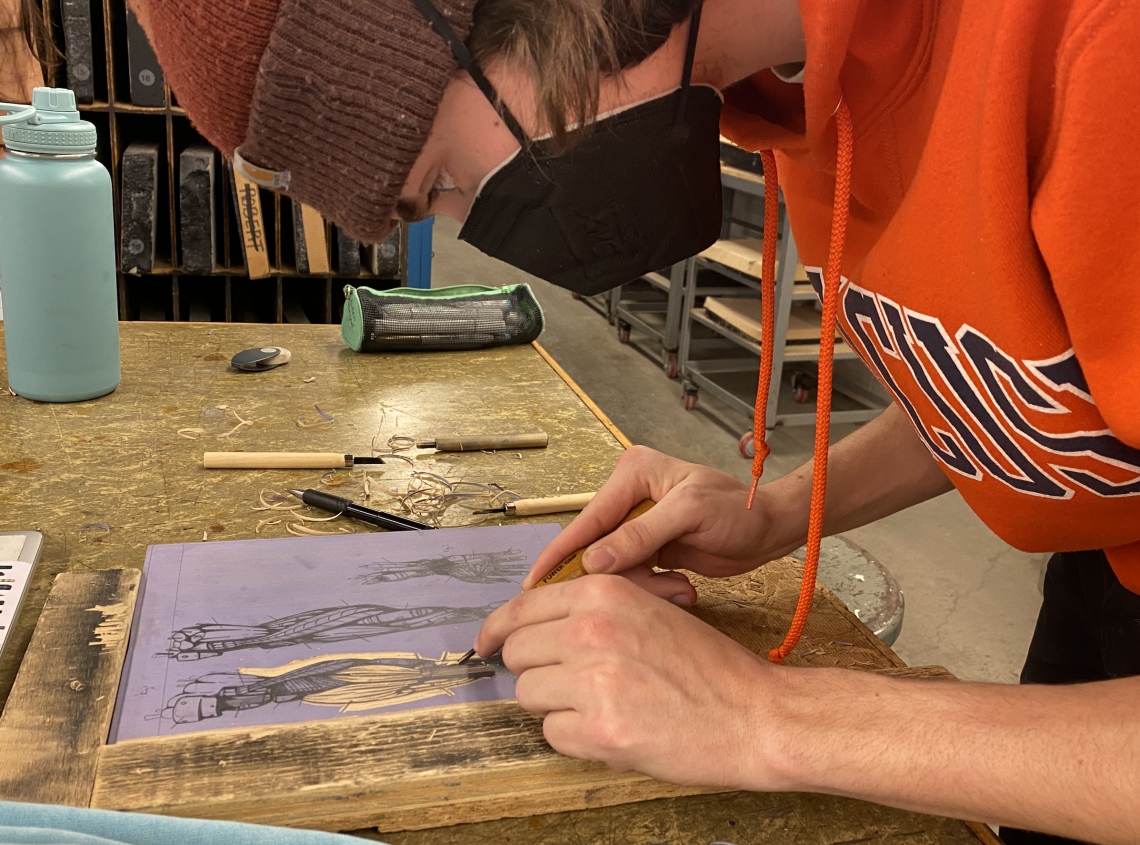
Printmaking
The print media and graphic art area at Syracuse University has a rich history of producing practicing artists, collaborative printmakers, contract printers, gig poster artists, conservators, preparators, curators, critics, activists, gallerists, art teachers and art professors. Because print media and graphic art have influenced and taken influence from all facets of the art, design, and technology worlds, the area is ideally situated to deepen understanding in traditional print studio methodologies like screenprint, lithography, letterpress, intaglio, relief, book arts, and papermaking while simultaneously broadening innovative and interdisciplinary approaches to your studio practice. Students taking print media and graphic art courses come from all areas of art, design, architecture, and media arts, and a course for non-majors is filled with students from the broader University.
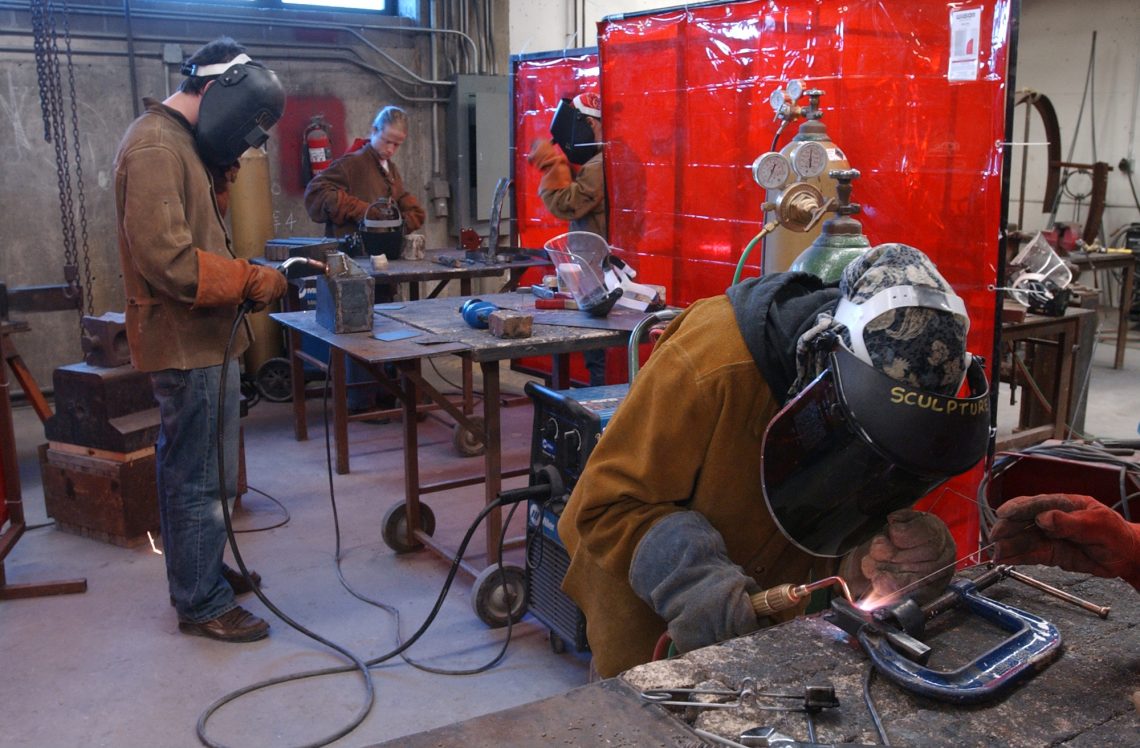
Sculpture
The sculpture intensive is focused on three-dimensional experimentation with form and idea, material and technique. You are encouraged to cross boundaries as you explore concept, form, and space. Opportunities are available for working in all media, from the traditional to the contemporary and beyond.
You receive thorough instruction in such processes as modeling, metal casting, welding, carving, plastics, and wood fabrication while being grounded in a thorough education of sculpture’s history, practice, and theory. You’ll also have access to new technologies, including rapid prototyping, CNC carving, and digital video and photo equipment. Our spacious facilities include state-of-the-art workshops, a gallery, and studio spaces.







